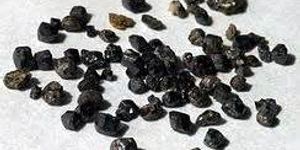Neuroscience
Are Brain-Training Programs Effective?
JAN 03, 2014 12:00 AM PST
Share
Song of Ice and Fire: Active Volcano Found Beneath Antarctic Snow
 Far below the wind-swept icy sheets of the Antarctic waste, a monster lurks, biding its time. It waits, a thing seemingly dead, for the right moment. And then, without warning, it awakes and roars to violent life. All are in peril within its reach: this thing so exotic that it could almost be called alien.
Far below the wind-swept icy sheets of the Antarctic waste, a monster lurks, biding its time. It waits, a thing seemingly dead, for the right moment. And then, without warning, it awakes and roars to violent life. All are in peril within its reach: this thing so exotic that it could almost be called alien.Not to worry: it is not some Lovecraftian horror or a creature from a John Carpenter film. Rather something far more mundane: an active volcano. Albeit one beneath a half-mile of ice, 60 miles off the coast of West Antarctica.
The newly-discovered volcano is exciting geologists, who are hailing the find as among the first of what promises to be a thrilling new era in Antarctic exploration. Indeed, it is suspected that other active magma systems may still lurk waiting to be located.
In a study published in the journal Natural Geoscience, researchers working on POLENET - a project intended to study the construction of the Earth's mantle underlying the crust - discovered the volcano while monitoring for earthquake activity. Washington State University in St. Louis scientists trekked two weeks into the driest and most frigid desert on Earth to set up seismic monitoring equipment. In addition to the surface seismic stations, airborne radar imaging was also used to examine the topology. In 2010 and 2011 POLENET hit the jackpot: swarms of earthquakes located in Marie Byrd Land on the western half of Antarctica, around the Executive Committee Range.
Examining the seismic data, the researchers received a surprise: a 3,200 foot-tall bulge that had risen below the surface, and in the recent past. Furthermore, the data indicates that the bulge is growing, a sign that magma consistently flows into the volcano. However, that is still a far cry from an actual eruption.
"We can say with pretty high confidence," Amanda Lough, a student at Washington State University and the lead author of the study, said, "that there wasn't an eruption while we were out there." Speaking to LiveScience's OurAmazingPlanet she noted that, "From the bed topography, we can see there is something building up beneath the ice."
Volcanic activity is not a new phenomenon to Antarctica. Indeed, one of Earth's most active volcanoes - Mount Erebus - is found along the coast of the continent. But the POLENET project marks the first time such geologic events have been located deep inland of Antarctica.
If the just-discovered volcano were to erupt, geologists are still unsure what the effects would be. The ice directly above the vent would be vaporized into terrifically hot steam... but what of the rest of the half-mile of ice above? It is doubtful that all of the ice would be evaporated. However, it is possible that the millions of gallons of melted water could wash toward the MacAyeal Ice Stream and send the glacier dramatically hurtling toward open sea. Such possibilities are making geologists positively giddy with wonder.
"I think there's no question that there are more volcanic surprises beneath the ice," said Richard Aster, seismologist at Colorado State University and co-author of the study. "This is really the golden age of discovery of the Antarctic continent."
You May Also Like
Loading Comments...








